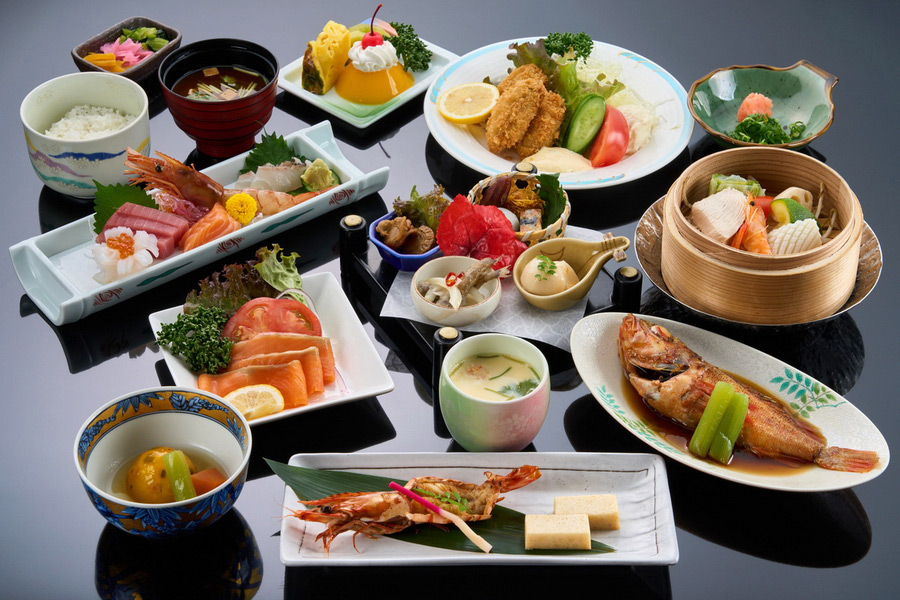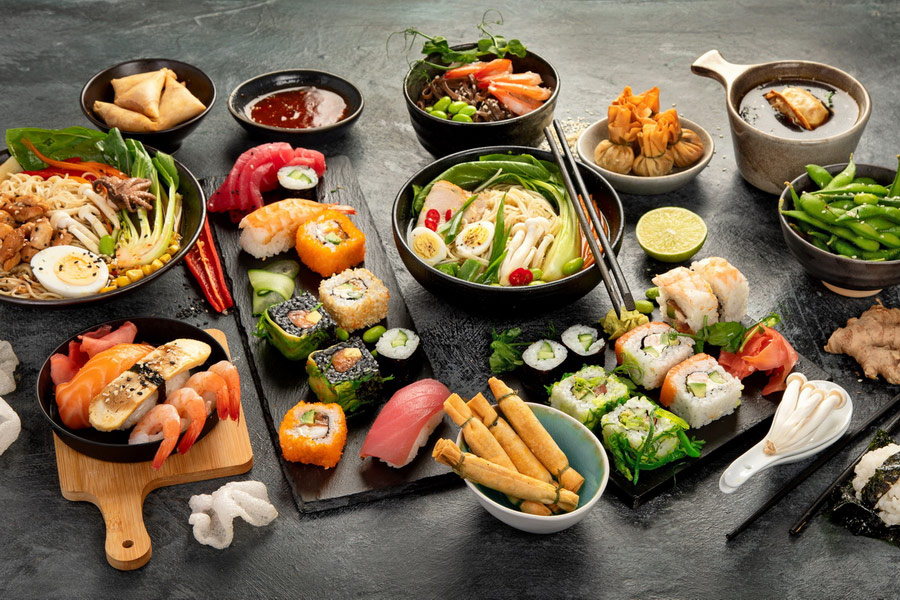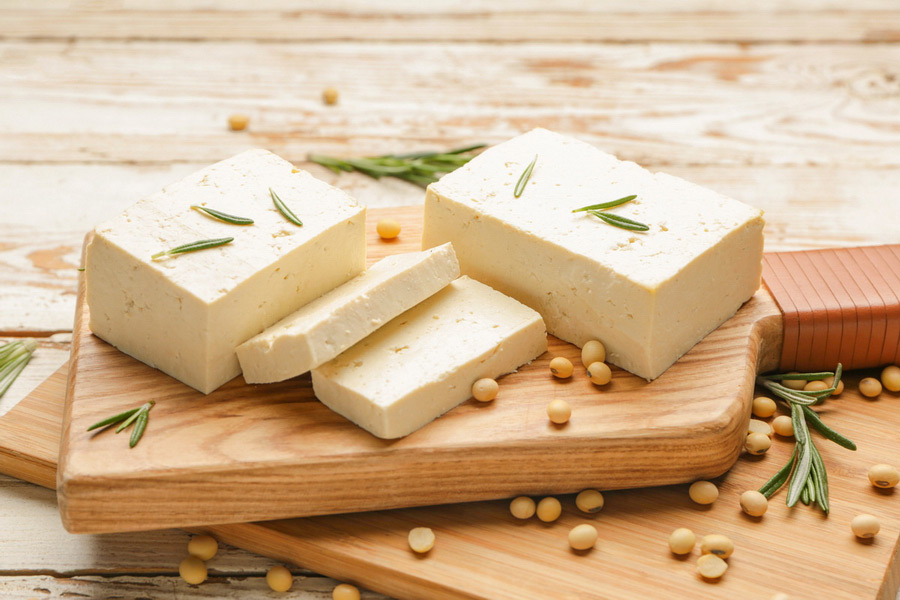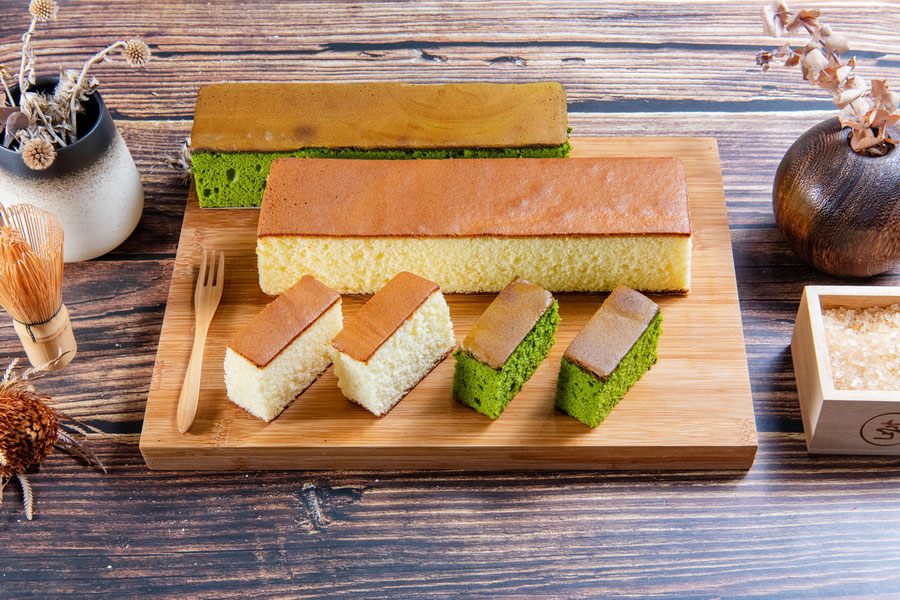Japanese Cuisine

Today, Japanese cuisine reflects the multicultural influences that have shaped the country. The daily food choices of locals range from traditional dishes to foreign fare.
For breakfast, many Japanese start their day with a Western-style meal (often referred to as yoshoku), such as fried eggs with toast and coffee, or a traditional Japanese breakfast (washoku) of rice, miso soup, grilled fish, and pickles.
Lunch may consist of a Japanese-style obento (boxed lunch) or a quick snack at a fast-food restaurant like Burger King, KFC, or Wendy's.
The residents of Japan can enjoy dinner at home or in one of many sit-down foreign restaurants. Chinese and Korean eateries are also popular, with yakiniku (Korean barbecue) being one of the most popular dishes in Japan, alongside sushi.
Large urban centers, especially Tokyo’s Shinjuku, have many upscale Italian and French bistros, including various ethnic restaurants serving Indian, Vietnamese, Malaysian, and Ethiopian cuisine.
Interestingly, a 2023 survey revealed that 43% of food delivery service customers stated that pizza was their most desirable food, followed by sushi.
This diverse food scene reflects the evolving tastes of Japanese people, who continue embracing a wide range of culinary experiences.
Washoku
Washoku refers to traditional Japanese cuisine characterized by dishes such as rice, miso soup, and seasonal side dishes emphasizing seasonality - hatsumono (first things). The cooking process involves lots of thoughts to make natural flavors shine through. UNESCO even gave Washoku a special shout-out, calling it an Intangible Cultural Heritage of Humanity. It is indispensable to Japanese culture and what makes them unique.
According to 2022 data, most people in Japan enjoy washoku at least once a month, with one-fifth of the population enjoying traditional cuisine two to three days a month.
The Art of Dining

Building on the principles of washoku, Kaiseki is a refined Japanese meal akin to a symphony of flavors presented on a tray. It is about fresh, seasonal ingredients, carefully prepared and akin to a work of art. You'll find it at special events like weddings, anniversaries, and those fancy business dinners.
Typical Ingredients
The flavor base of many Japanese dishes includes dashi, wasabi, minced shiso, ginger, various herbs, and shichimi (a popular spice mixture). Fermented products such as soy sauce, rice wine, and vinegar used in specified amounts also add a punch of flavor and aroma to trigger a savory dose of umami.
In addition, Salads or Hitachi-mono, usually side dishes, are typical for Japanese cuisine. Rice has historically been the staple food and remained a base for many meals. But sometimes, noodles take the place of rice.
Surrounded by the ocean, Japanese cuisine heavily incorporates fresh and diverse seafood. However, when Japanese people talk about meat, they usually mean beef, pork, or chicken. Beef or pork hotpot, for example, is a star of many gatherings.
Eating With the Seasons
The Japanese have long believed that consuming fresh seasonal food has healing properties. Some even claim that if you eat what the season provides, you may not need a doctor. For example, people in Japan used to believe that if you ate seasonal radish in winter, you wouldn't catch a cold. Of course, that's an exaggeration, but science has also shown that seasonal produce has increased nutritional value when it is in season. Additionally, ingredients taste much better when they are in peak season. Have you ever had a cucumber picked fresh from the vine? It’s a completely different experience!
Read on to learn more about what to eat in Japan during spring, summer, autumn, and winter.
Dishes for Special Occasions
A notable trait among the Japanese is their enjoyment of food. And food always brings people together, whether friends, colleagues, or families. The Japanese are quite superstitious, with beliefs stemming from their Shinto religion and ancestral traditions. Moreover, they associate food with special occasions such as New Year, Gion Festival, Hinamatsuri, etc., believing that these practices will bring them good fortune.
Vegetarian Food

You can enjoy delicious Japanese vegetarian cuisine called shojin ryori, which is rooted in Buddhist culture. It utilizes fresh ingredients, and you will find lots of tofu, veggies, fruits, and seaweed in their dishes. Apart from the taste, shojin ryori offers high aesthetic value, making you want to snap a picture before you dig in.
Japanese Interpretation of Foreign Cuisine
Japanese cuisine goes beyond sushi and ramen. Over the years, Japan has picked up loads of ideas from other countries, like China, Korea, the US, and even Western nations.
Despite adopting these foreign food ideas, Japan has transformed them into something unique. For example, the Wafu hamburger is a Japanese take on the American hamburger with soy sauce and mayonnaise. And then there's the Italian pasta with uni - a type of sea urchin popular in Hokkaido and outside the region.
The yoshoku, a Japanese word for Western-style dishes, has become a natural choice for Japanese families. They're not just trendy. They're part of the everyday Japanese diet.
Japanese Beverages

Japan has much to offer to tea enthusiasts. Thanks to their long-standing tradition, one can find everything from delicate green teas that taste like fresh grass to matcha, which is green tea in powder form. However, tea isn't the only beverage of interest in Japan. Japan has unique beverages like Ramune, Calpis, and sake. The country also features beer, shochu, whisky, and wine.
A Global Expansion of Sushi
Sushi and sashimi have transcended Japan's borders. It's not just food; it's an experience that has become a worldwide culinary sensation.
The global expansion of sushi began in the late 19th century when Japanese restaurants started emerging outside of Japan. People were fascinated by the unusual ingredients and loved them.
Today, you can find Japanese restaurants and sushi bars in almost every major city on Earth. They act as ambassadors of Japan's rich culinary heritage.
Japanese Desserts

Japan has some seriously delicious desserts that are just as varied as their other food. When in Japan, have tayaki - a fish-shaped cake stuffed with sweetened red bean paste. Or you can try amitsu, a clear agar jelly filled with the same paste. And there’s castella, a fluffy sponge cake - a Japanese version of the Portuguese cake from Nagasaki.
Japanese Dining Manners
Some core elements of traditional Japanese table etiquette include sitting properly on a tatami floor, using chopsticks correctly, not talking while eating, and not sticking chopsticks straight up in rice. It's also polite to finish all your food and not make any chomping noises. It’s also polite to finish all your food and avoid making chomping noises. Understanding and following these and other table manners shows respect for Japanese culture and cuisine.

